Cidersage
Hard Cider, Mead, and Miscellany from the Front Range of Colorado
How To Make Hard Cider
Welcome to my cidermaking tutorial! In it, I step you through the process of making hard cider– from apple to glass–in these stages:
- Obtaining, Grinding, and Pressing Apples
- Fermenting and Aging Your Hard Cider
- Kegging and/or Bottling Your Hard Cider
If you’re starting from juice rather than apples, see sections 2-3 for your steps…though I recommend reading the first section as well, because once you get started, you’ll want to know more and more about the topic. I sure did. Enough rambling–on to the cidermaking!
Obtaining, Grinding, and Pressing Apples
Sourcing Apples:
My first ciders were made from the unpasteurized, sweet, non-alcoholic cider available in the fall. In 2013, I began trying to source cider apples locally for my batches of hard cider–this tutorial chronicles that process.
Quite frankly, apple sourcing can be a frustrating process here in Colorado, where a few factors conspired to keep me from obtaining the varieties I wanted:
- 2013 was one of the worst years for apples on the front range of Colorado in years (primarily due to late frosts)
- Low availability of the varieties of apples in the U.S. that are good for cider–I’ve written about this factor before here
- Colorado being less of a hard cider-making region than others (e.g., New England), and thus having even fewer cider apples than elsewhere
- Other cider-makers beating me to the punch on the few cider apples I’d heard about in my region
Nonetheless, I did manage to find some Winesap and Rome varieties, both of which are listed in Cider: Making, Using, and Enjoying Sweet and Hard Cider, which was my cider-making bible and a great source of information to date.
- Edit: Since originally writing this tutorial, I’ve moved on to more technical cidermaking books. I recommend The New Cider Maker’s Handbook for a more technical deep dive, as well as Craft Cider Making, which has a new edition in the works.
I obtained the apples–two bushels of Winesaps and a half bushel of Rome–from Masonville Orchards of Ault, Colorado, who had them delivered to their Boulder Farmers Market stand for me to pick up:
As the Boulder market is busy, I had to park a few blocks away–something I never noticed as a problem until I had to lug 80-ish pounds of apples to my car. My thanks go out to Jared, who helped me carry them, and Katie, who immediately knew who I was when I showed up…they were extremely helpful.
Grinding:
Apples in tow, I headed to my parents’ home, where I’d stashed a Happy Valley apple grinder/press that I borrowed from a friend who I meet with frequently at Lefthand Brewing Company.
At this point, we assembled, washed, and sanitized (using a Star San solution) the grinder/press and glass fermenters that the pressed cider would be going into, and set up our washing line. The latter consisted of two plastic tubs, one with Star San solution and another with plain water for rinsing, which we used to sanitize the skins of the apples to prevent wild yeast and bacteria–which occur naturally in the skins of apples–from infecting the fermentation:
Note: Using a sanitizer wash isn’t really necessary for washing the apples-in fact, some cider makers will go as far as to allow the wild yeast to ferment the cider without adding commercial yeast at all; however, I wanted to control the yeast character as much as possible, so we used this approach. Since then, I’ve typically only rinsed the apples and cut out any rotten portions. Sanitizing your fermentation equipment, however, is essential.
Once we had the apple washing station going, we started grinding the apples with the help of a friend of mine, Chris. This was a good time, if a bit of work–the grinder made mincemeat of the apples, even though they were firm and fresh off the tree. The process is quite simple–one person keeps the crank turning, and another feeds apples a few at a time into the hopper. The apples are shredded into pomace, which falls into the mesh bag-lined bucket below.
Note: Make sure to place a bucket under the collection plate at this point–you’ll get some juice seeping out of the bucket as you grind, even before you start pressing.
I’ve heard it’s a good idea to ‘sweat’ the apples, leaving them out on a tarp for several days to soften and allow the sugars to concentrate. I can definitely see the advantage of this, as the juice yield is likely to be higher at pressing and the apples will be easier to grind. Apparently, you could also freeze the apples and thaw them prior to grinding to achieve the same effect–more on that here.
Pressing:
Each time the collection bucket got reasonably full, we switched to pressing. With the collection bucket already in place, you then place a wooden plug (one that spans the diameter of the bucket) on top of the pomace, line it up with the screw above, and bring the screw head down onto the plug to exert pressure. At this point, the juice begins to run, and it’s a matter of waiting for it to subside a bit before incrementally applying a bit more pressure via the screw.
This is the slowest part of the overall process; the important part here is to have everything lined up appropriately and not to exert too much force at once, as you could damage the press. Tighten, wait, transfer juice to the fermenter as the collecting bucket fills, tighten, wait, and when more tightening yields little juice, discard the pomace (which can be mixed into a compost heap but which is too acidic to apply directly as compost) and return to grinding.
Most estimates I’ve seen are that a bushel of apples yields 2-3 gallons of juice; we ended up right around 2, filling one fermenter with 5 gallons of juice and with about 1/4 of a bushel of Romes left over. I attribute the low yield mostly to the facts that:
- These were very fresh, firm apples right off the tree that we didn’t sweat due to time constraints.
- We were gentle on the pressing side, not having used a press before and it being borrowed from someone else. That said, I don’t think we could have pushed it much more on this front.
Choice of apple variety could have been a factor as well, since the variation in physical and chemical characteristics among the many varieties is large.
The next section–Fermenting and Aging Your Hard Cider–will start with the gravity, acid, and yeast discussion, but for reasons I’ll explain in that section, it’s important to have your equipment lined up beforehand…otherwise, you may end up like me in a mad, last-minute dash to the nearest homebrew store to obtain ingredients or equipment you suddenly realize you need.
My thanks go out to my parents, Bob and Kay, for their assistance in the grinding/pressing process (and for my dad’s photography) and to Chris, who supplied some muscle, curiosity, and humor.
To review, in this section we covered sourcing apples, washing them, grinding them, pressing them, transferring the juice to a carboy, and various tangential steps.
Below is a list of equipment and ingredients you’ll need in place before you start your pressing. Most of the fermentation prep equipment and ingredients are available at More Beer or at your local home brewing store. If you’re thinking of purchasing these online, please go through my links below or through the resources page as I will get a small cut of what you spend at no cost to you and will use it to keep the site going.
Grinding/Pressing Equipment:
- A combination apple press or separate grinding and pressing units. See our resources page for vendor information
- A tarp to place beneath the pressing area
- Wash basins (I used large, plastic storage totes) for washing and rinsing apples
- 2 collection vessels–plastic, glass, or good stainless steel–for collecting juice and transferring it to the carboy/fermenter
- Apples! Cider Apples if possible–acquire and read Cider: Making, Using, and Enjoying Sweet and Hard Cider for more specifics
Fermentation Prep Equipment:
- Fermenters sufficient for collecting all the juice you could conceivably produce (while we only filled one, we had a second ready to go in case we produced more than expected)
- A Funnel to fill the fermenters with
- A stopper and airlock for each fermenter
- Star San solution for sanitizing all surfaces that come in contact with the apples or juice
- Empty spray bottle to make sanitizer solution in (for spraying down surfaces)
- Campden Tablets for sulfiting the juice
- A hydrometer and test jar for testing
- Yeast–either cider, wine, champagne, or beer, depending on your recipe
- Yeast nutrient, in case you need to jump-start a slow fermentation. Use with caution, however–a fast fermentation is not desirable and can produce off flavors–I recommend using it only if your fermentation gets stuck
- pH strips of the lower pH range–not wide-spectrum strips–to determine how acidic your cider is
- A thermometer for mixing warm water to rehydrate your dry yeast in (if applicable)
- Optional–additional sources of sugars, such as honey, table sugar, or maple syrup, to add gravity to the juice
Fermenting and Aging Your Hard Cider
In this section, I talk about fermentation prep, fermentation, and aging, using the Winesap cider from the grinding/pressing tutorial as an example, as well as two other ciders I made in 2013…each of which brought its own challenges.
Fermentation Prep:
Once you’ve pressed your cider and the juice is in the sanitized fermenter(s), it’s time to establish the right conditions for fermentation. These ‘Fermentation Prep’ steps break down roughly along these lines:
- Sulfiting the juice (or not)
- Adjusting the gravity (or not)
- Determining acidity
- If sulfiting, waiting 24 hours before adding yeast
- Adding yeast
Adding Sulfite (or not):
Adding sulfite (SO2), usually in the form of crushed Campden Tablets, is commonly used to impede the growth of bacteria and wild yeasts while allowing your desired yeast to predominate the fermentation.
Sulfiting may not be necessary should you start with great overall sanitation and immediately pitch a large volume of yeast, but as cider fermentations are often much slower than beer fermentations–and should be, for optimal results–it will take longer to produce enough alcohol to suppress those organisms than you may be used to.
Here are some guidelines should you choose to sulfite:
- A rough rule of thumb–the one I used–is 1 crushed Campden tablet per gallon of juice. In practice, this may be a bit more than needed for a U.S. gallon, according to established cider authority Andrew Lea.
- Edit: The dosage you should use varies by pH level–see the table here. I’ve oversulfited very acidic ciders (such as crab apple ciders) in the past, which can result in slow fermentation
- Make sure the sulfite tablets you’re using are formulated for 50ppm per tablet per gallon (I’ve seen some on the market that are formulated for 30ppm, which you’d have to adjust for)
- Don’t inhale sulfite dust when you’re crushing the tablets. I got a whiff when crushing mine and it has a powerful, burnt match smell that tells me you wouldn’t want this in your lungs
- If you’re going to sulfite, be cautious of the yeast you’re using–some yeasts don’t handle pre-existing sulfur well. See lessons learned below
- If you’re going to sulfite, wait 24 hours after adding crushed sulfite to the juice before adding yeast
Sulfurous Lessons Learned:
I used Red Star Montrachet yeast, purchased from my local home brew store, on both my Winesap and Arkansas Black ciders–the latter from another grind/press operation a few weeks after the Winesap operation above. Both were sulfited with Campden tablets. I later discovered that this particular yeast produces hydrogen sulfide (H2S, which smells like rotten eggs) in the presence of ‘excess sulfur compounds’. And indeed I could detect–very faintly, in the Winesap, and strongly, in the Arkansas Black, a rotten egg smell in the finished cider. One lesson here is to consider sulfite use beforehand when choosing the yeast you’re going to use. Another is, cider fermentation is really in the world of wine fermentation…time to read up on wine-making. I think I’ll start here.
Adjusting the Gravity(or not):
Take a gravity reading using your hydrometer and test jar. You can use an ABV calculator to determine what the final alcohol content will be from your original gravity. Assume 1.000 as the final gravity for now, as cider contains mostly simple sugars and should ferment out completely to 1.000 unless you’ve added unfermentable sugars (e.g., lactose) to the mix.
For instance, my Winesap cider started at 1.052 right out of the press, yielding a potential of 6.83% alcohol. As there’s a general rule of thumb that cider at 7% or higher is better for aging since it keeps longer, I decided to bump the gravity to 1.060 (7.88% potential alcohol).
Using this chart, I determined I needed to add 13oz of table sugar per gallon to the juice, did so (I dissolved it in a small volume of boiled water first), then re-checked the gravity.
Note on sweeteners:
The above assumes the weight is of standard, granular table sugar. The actual sugar content results by weight will vary a bit if you’re using different sugars, such as brown sugar, honey, molasses, maple syrup, etc. For a more precise handling of these differences, see the priming and bottling chapter in John Palmer’s How to Brew.
Of course, different sweeteners will also add differing flavor, color, and ‘fermentability’ aspects as well…for instance, molasses will add unfermentable sugars, a dark color, and strong, sulfury notes, while table sugar will add very little flavor or color at all–it will just be converted straight into alcohol.
Determine acidity:
Since cider often ferments very slowly–my Winesap cider took a month to ferment to 1.000 with no added yeast nutrient–it’s important for protection against undesirable microbes that the cider be sufficiently acidic. Moreover, acidity is a key component of cider’s flavor profile, and low-acid cider will be missing the tartness you expect. If there’s little body to the cider in the first place, and little acid, you’re left with little but alcoholic water.
Acidity can be measured with pH strips, but this is only a very rough measure of actual acid content–most commercial cider makers will use a more advanced version of an acid testing kit to determine acid content. If acidity is too low, it can be adjusted by adding more acidic juice (from ‘sharp’ or ‘bittersharp’ apples) or an acid powder (such as malic acid, the main acid naturally occurring in apples) to the mix.
Acidity Lesson Learned:
As Proulx and Nichols describe the ‘best’ pH range for cider being between 3.0 and 3.8, I found myself very worried when I came up with between 4 and 5 using some wide-spectrum pH strips. I then jumped in the car and headed to the closest open homebrew store, returning with more precise, wine-spectrum pH strips and Malic acid powder (for increasing the cider’s acidity) in hand, only to determine with the new strips that the cider was actually around 3.2 (quite acidic compared to typical store-bought juice).
If Sulfiting, wait 24 hours:
While sulfite generally doesn’t kill desirable yeasts outright, it will slow them down significantly. If you sulfite the juice, wait 24 hours for the sulfite to begin to break down before adding your yeast.
Add Yeast:
Cider can be fermented with a number of different yeasts, but those that emphasize the natural character of the apples without adding a lot of competing flavors are generally either white wine yeasts or English cider yeasts.
Common examples of these include:
- White Labs WLP775 English Cider Yeast
- Lalvin EC 1118 Prise de Mousse Wine Yeast
- Lalvin 71b-1122 Narbonne White Wine Yeast
- Red Star Cote Des Blanc Dry Wine Yeast
As mentioned above, be careful when using sulfite that you’ve selected a yeast that can handle sulfite well without producing undesirable compounds.
If you’re using a liquid yeast, It’s probably useful to use a yeast starter–a mini-fermentation started in a small volume of apple juice a day or two before you add it to your larger fermenter–rather than just adding a liquid vial of yeast directly. The latter certainly works, however. The idea with a starter is that you get the yeast reproducing and active in a small vessel so that you initially introduce more and more active yeast cells to your juice/must, helping to ensure a complete fermentation and reducing the lag time before visible fermentation appears in your fermenter.
The caveat here though is that if you use a dehydrated wine yeast, you’ll want to use GoFerm instead of just adding it to juice, as dehydrated yeast need a particular mix of nutrients to activate properly (vs. liquid yeast, which is ready to go right out of the vial).
Once you’ve added your yeast to the fermenter and replaced the airlock, place it in a dark, cool location according to the temperature guidelines of the specific yeasts…then the waiting and monitoring begin.
Fermentation:
Cider-making books–particularly Craft Cider Making by Andrew Lea and The New Cidermaker’s Handbook by Claude Jolicoeur–go into the fermentation topic in considerable depth. Here, though, I focus on the basics of temperature control, nutrients, and what to do when your fermentation stops (gets ‘stuck’) while residual sugar remains in the must.
Temperature:
The yeast you’re using should have an ideal temperature range for fermentation printed on the packaging. I recommend trying to ferment at the lower end of the range if possible, as doing so will generally result in fewer off flavors being produced by the yeasts. It does mean a slower start to fermentation and a slower fermentation overall (the risk of which is offset by acid and, potentially, sulfite), but with cider, that can be well worth it in that off flavors or imperfections are apparent in finished ciders that might go unnoticed in, say, a bold, dark, hoppy imperial stout.
Also, add pectic enzyme along with the yeast–it will help to break down the pectin in the juice and remove the haze over time.
Nutrients:
Unlike beer wort, which contains a multitude of nutrients, apple juice has relatively fewer nutrients. That said, it generally has enough to not require any yeast nutrient or yeast energizer additions, which will cause the juice to ferment more quickly than desired.
My Arkansas Black cider, for instance, fermented at the same temperature as the Winesap cider (around 65 F), but unlike the Winesap, I added nutrient to the Arkansas Black juice before fermentation. This was a mistake–while the Arkansas Black fermented to dryness within a week (vs. over a month for the Winesap), it had significantly more off aromas (particularly H2S/rotten egg) and less apple character than the Winesap did. Some of this is no doubt due to the differing characteristics of the apple varieties, but given the same yeast and temperature, the sulfur effect in particular seemed to be amplified by the fast fermentation.
One risk with low-nutrient juice is that the fermentation will halt altogether, with no bubbling in the airlock and with a gravity measurement showing significant remaining sugar. When this happens, don’t despair, as there are a number of options available.
Stuck Fermentations:
You can generally restart a stuck fermentation with a combination of:
- Temporarily increasing the temperature (i.e., move the fermenter out of the basement to a warmer floor of the house for a few days)
- Stirring the must (or my preferred alternative–de-gassing it with a de-gassing wand attached to a power drill)
- Adding yeast nutrient to the must
- Pitching new yeast into the must
I ended up using all four of these in restarting a New England-style cider that I made from local, unpasteurized sweet cider with additions of brown sugar, honey, and raisins. I’m not sure why the fermentation got stuck, but most likely I had insufficient nutrient for the large amount of sugar (apple juice plus 4 lb of dark brown sugar, 1 pound of honey, and 2 pounds of raisins). It started out ok, at 1.070 original gravity, but got stuck at 1.050.
At first, I added nutrient, then when that didn’t work I brought it upstairs (70 degree F) for a couple days. This didn’t work. I added a packet of rehydrated Montrachet yeast. That didn’t work.
Ultimately, I degassed it a couple times over the next few days and added nutrient in staggered additions according to the mead-making method detailed in Ken Schramm’s The Compleat Meadmaker. This worked–the fermentation picked back up and completed all the way to 1.000 and about 9% alcohol. Thanks, Ken–your mead-making techniques saved my cider.
Aging:
Racking:
Once fermentation is done (as measured by lack of bubbling activity in the airlock, then by a gravity reading), siphon the cider to another, sanitized fermenter with an auto-siphon, taking care not to transfer the sediment (‘lees’) on the bottom of the first fermenter into the second one.
Replace the airlock, and you’re ready to age the cider. This could be done for as little as a month or two or for many months. This depends on preferences and whether you’re aging the cider with something (e.g., oak chips or other fruit), or aging in an oak barrel.
A few months in, malo-lactic fermentation can also occur in which lactic acid bacteria ferment the sharp malic acid in the cider, leaving behind softer, less tart lactic acid and a smoother cider. If you did something impulsive and, say, sanitized the apples before grinding and pressing (as I did above), this step is unlikely to occur spontaneously. If this step is desired, malolactic bacteria are available for inoculating the must.
Oak:
Aging in oak barrels is a bit outside the scope of this basic tutorial, but it’s certainly being done in the brewing community, with a healthy resale market existing for used Chardonnay, Brandy, and Whiskey barrels. One vendor in my area is Rocky Mountain Barrel Company.
Keep in mind that if you go down this route, you’re making a pretty big investment and will need to learn how to properly clean and maintain your barrel…the process for this is quite different than maintaining standard plastic, glass, or steel fermenters. It’s discussed a bit in the Proulx and Nichols book, but I’d suggest doing more research on sourcing and maintaining barrels if you pursue this.
That said, I’ve had some outstanding oaked ciders–the oak tannins can add a lot of character to cider–and I know some small commercial cider makers who are using barrels, so if can definitely be done. I just don’t have much to contribute to that discussion…yet.
You can also add oak chips, or various incarnations of oak staves from other barrels, directly to an aging vessel, without having a barrel of your own.
Next Steps:
Once your cider has aged to your taste–take some samples with the wine thief periodically to see how it’s evolving, and record your observations–you’ll need to keg or bottle it. See the tutorials below for more on this topic.
Keg Or Bottle Your Finished Cider
Kegging:
Should you choose to keg your cider, see the kegging tutorial.
Bottling:
If you want to bottle your cider directly from a keg, see the Beer Gun Tutorial.
If you want to bottle your cider using the traditional, home brew method (gravity filler + priming sugar), I don’t have a tutorial for that yet, but there should be a number of them available online and I recommend the Priming and Bottling section of How to Brew.
Equipment:
For more information on cidermaking equipment–including commercial and larger-scale hobbyist options–see the Equipment pages on Ciderschool:
See also the Small Cidery Gear Roundup.
Mead:
Apples aren’t your thing but honey is? No problem–here is the equivalent of this tutorial but for mead/honey wine.
Feedback Wanted!
Please contact me via the Contact Us page with any suggestions or questions, and thank you for taking the time to review this cider-making tutorial–I hope you find it to be useful!
–
Like what you see here? I plan to create a lot more meadmaking, cidermaking, and even orchard management content soon on my new site, ciderschool. There’s not much content there yet, but check it out, get on the mailing list, and stay tuned if you are interested in how-to content, equipment reviews, and resources for making cider and mead.
30 Comments on How To Make Hard Cider
1 Trackbacks & Pingbacks
Leave a comment
Copyright © 2024 | MH Corporate basic by MH Themes
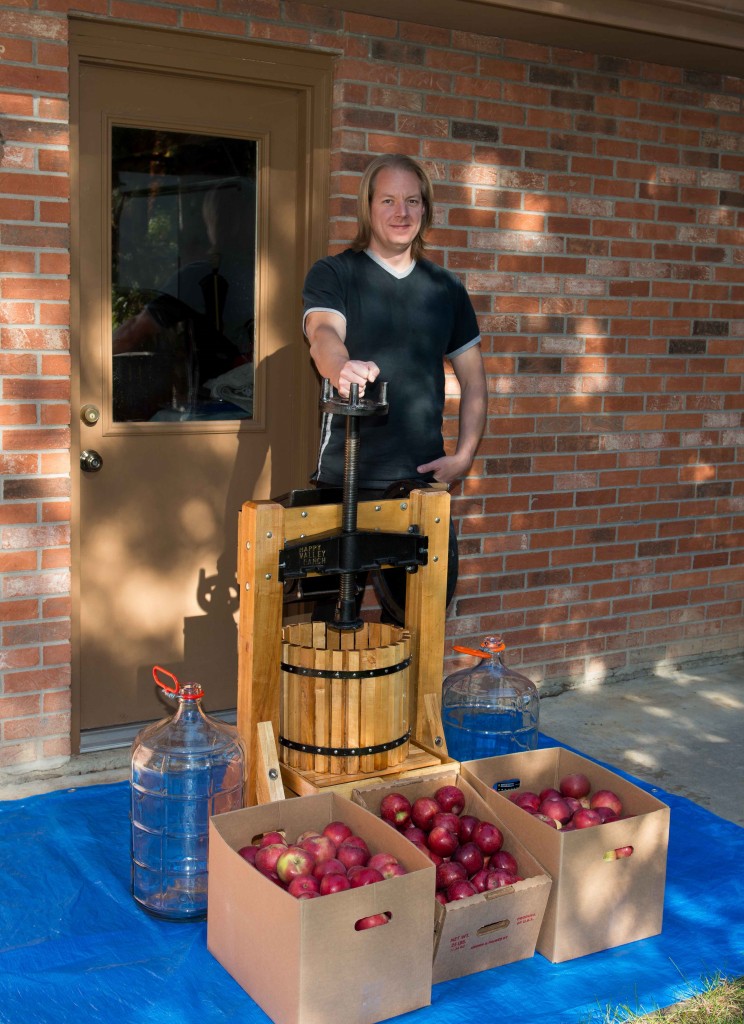
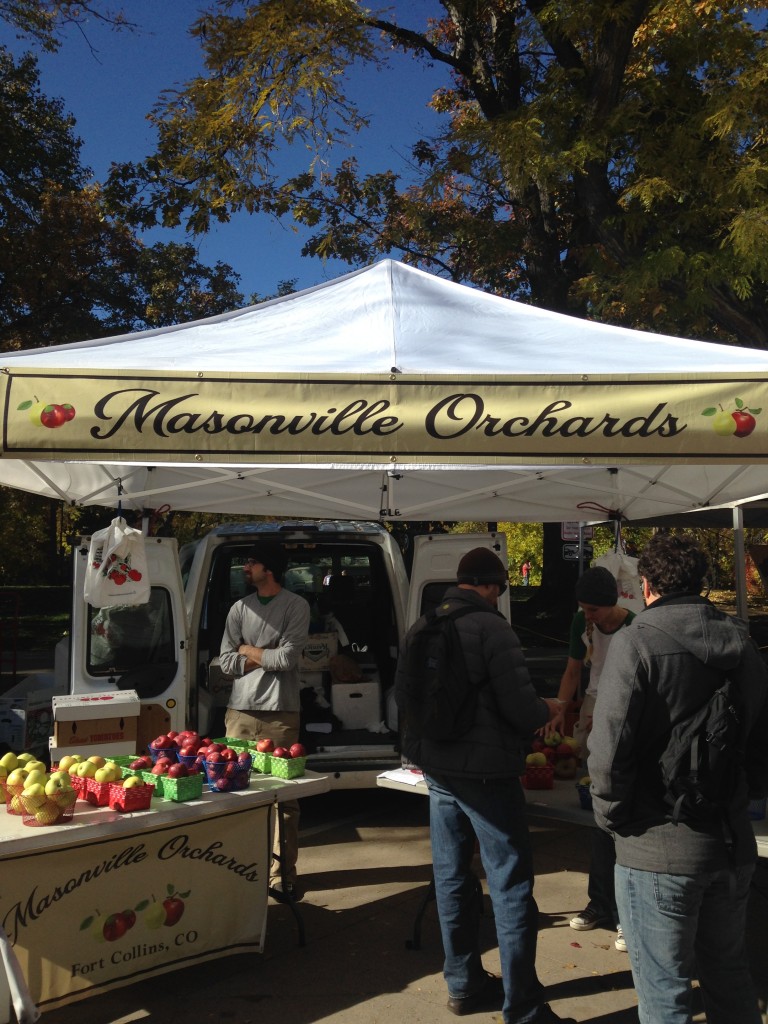
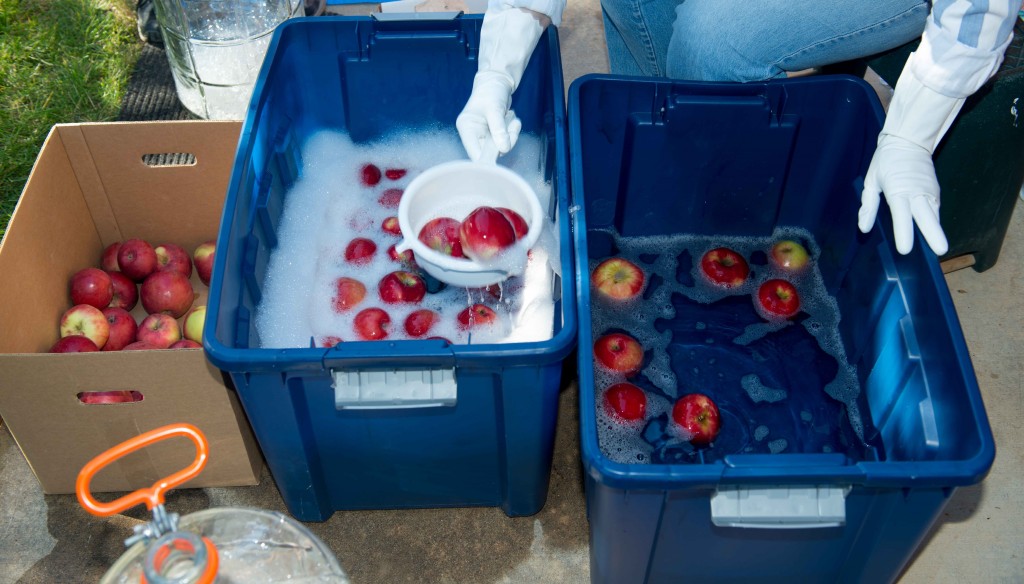
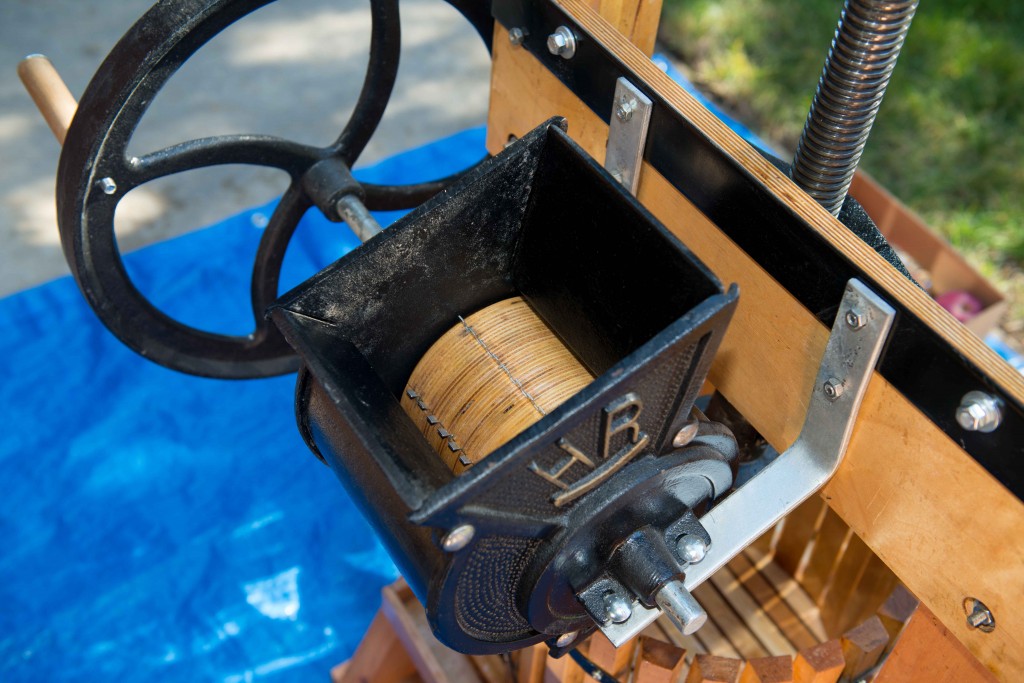

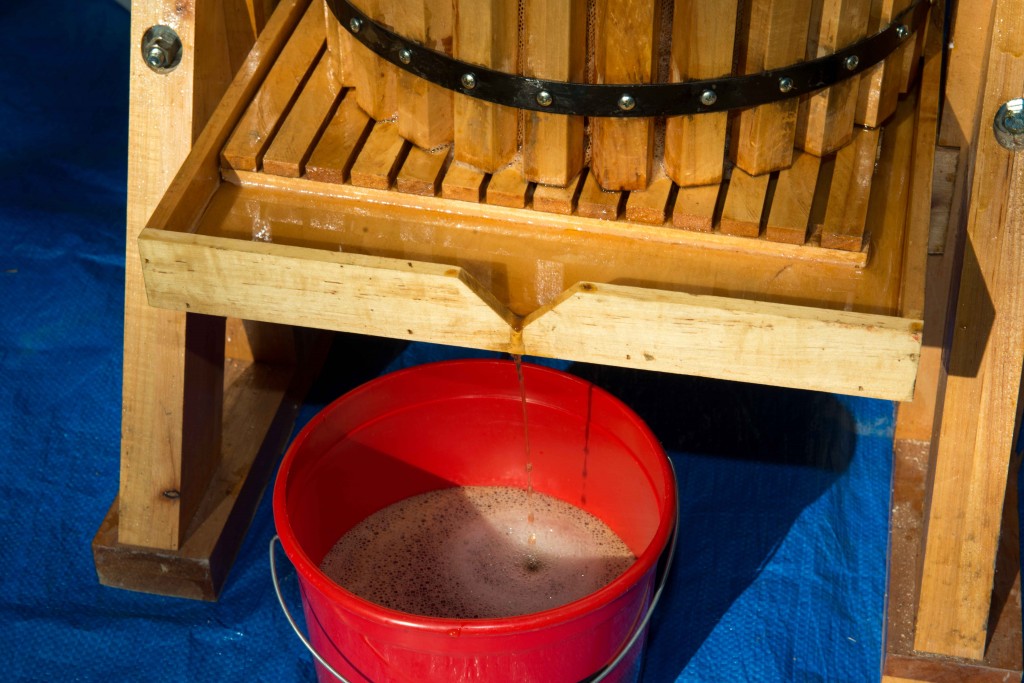
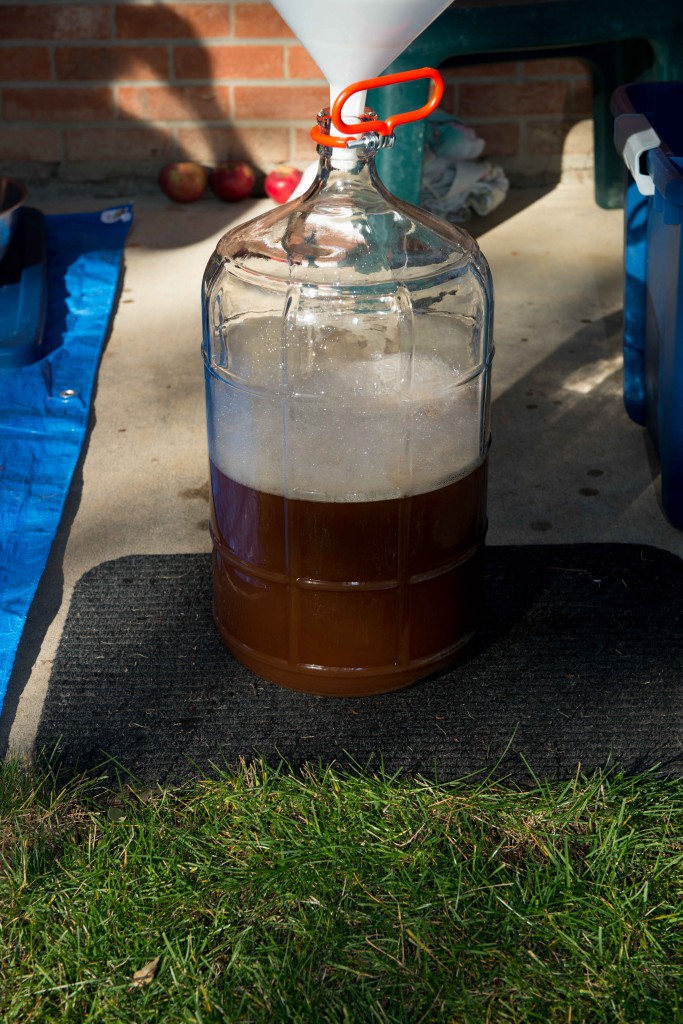
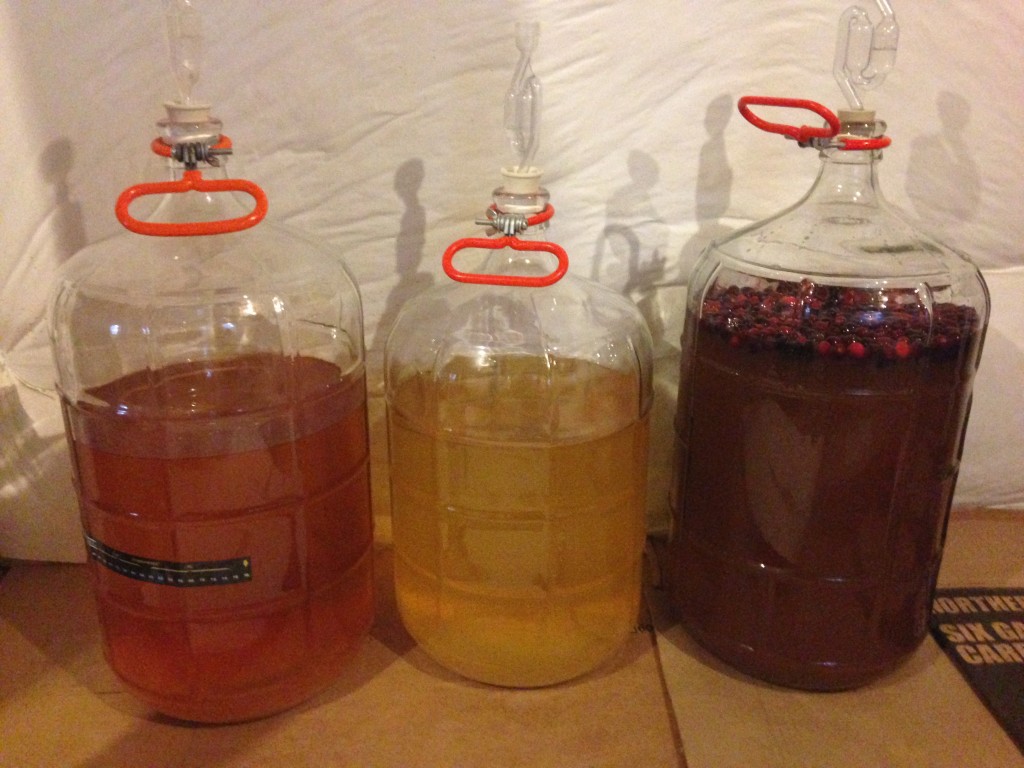
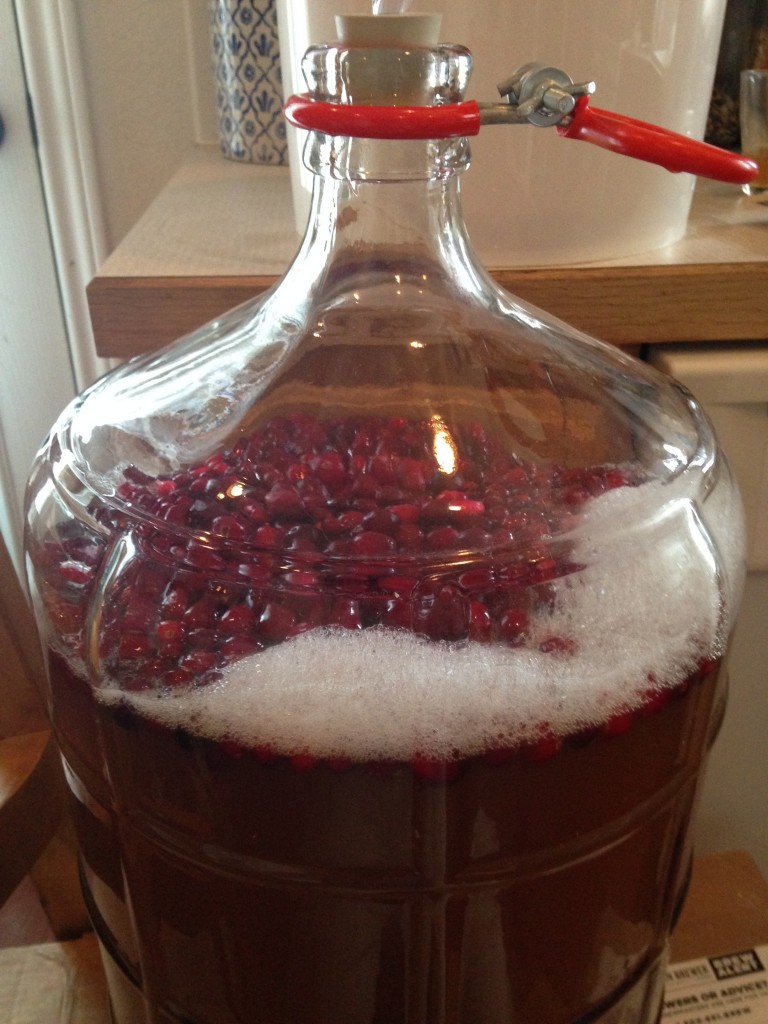

I have a stuck fermentation which has measured 1.010 for the last couple months. I started the batch as a wild-yeast ferment 3 months ago with 2 pounds of sugar and a pound of honey. It seems that wild yeasts aren’t able to finish with that much going on. A month ago I made a starter with fresh cider and ale yeast and pitched that to no avail. Today I just added a few teaspoons of nutrient into the 5 gallons and stirred it up with the lees to see if that does the trick.
For the following unpasteurized batch that I started two months ago I pitched English cider yeast starter right away and that’s attenuated from 1.080 down to 1.004. Again, it seems to be stuck, so I may try added nutrient again if the other batch responds well.
I’ve definitely seen lots of sugar make things difficult for yeast in the absence of yeast nutrient…which is generally not great in cider due to the ‘nowhere to hide’ nature of cider when it comes to off flavors from fast, hot fermentations.
Depending on what OG these started at, your yeast may just be inhibited by the alcohol levels. The White Labs English yeast for instance doesn’t appear to be intended for alcohol levels…from 1.080 to 1.004 is something like 10% alcohol. May need to finish something like that off with a champagne or aggressive ale yeast (e.g. Cry Havoc)…or just enjoy your naturally, slightly sweet cider if you’re going the kegging route. I’d be a bit nervous of bottle bombs at that level for bottle conditioning, though, especially if adding more priming sugar.
Good luck!
Great write up, I just wonder about using Starsan on the apples. You did say it wasn’t required, but I really try to limit starsan use because it’s not really safe for consumption.
Glad to see another hard cider blogger. Keep it up.
Thanks, Drew! Good point re: Star San. It was a dilute solution and the apples got rinsed afterwards before pressing, but yes, it was overkill. Probably won’t go that route again, especially if also using SO2. Good luck with your experiments; I look forward to checking out your site.
Nice informative page, wish I had found it years ago. I’ve found that if you boil yeast nutrient it will smell like sulpher. Regardless of the myst/yeast/anything else.. Don’t boil it sometime and see how it does.
I have a question about the priming sugar. If I want a cider to have some carbon dioxide (that is, adding sugar in the bottling phase), but I also want it to have some residual sugar. How do you ensure that the yeast in the bottle does not ferment the bottled cider all the way til it’s dry? I tried cider a year back, and it ended up being too dry for drinking, althou it had some nice fizzy cardon dioxide.
Hi Jim,
That’s a tough one–since both the natural sugars in cider and priming sugar are simple sugars, the yeast will (typically) fully consume all added sugar up to the maximum alcohol content of the yeast. Given that the typical yeasts used for cider are white wine yeasts with max alcohol tolerances upwards of 14%, throwing more sugar at it isn’t going to end well.
Most commercial ciders with residual sweetness are stabilized via pasteurization or chemically (e.g., with potassium sorbate, which inhibits yeast reproduction) and force-carbonated. If you have a kegging setup (tutorial here), you could do something similar–stabilize after completion of fermentation, sweeten to taste, rack to keg, then carbonate. From there you can bottle with a beer gun or just serve from the keg.
Another option would be to sweeten with a non-fermentable sugar such as Stevia–I don’t think that’d preclude you from also using priming sugar for the purposes of carbonation only.
-Dan
Thanks Dan for your response! I think I will try exactly that on some of the bottles and do some comparison.
Sure thing! FYI, I’ll be consolidating my cidermaking-oriented content over on ciderschool.com, so feel free to head over there, check it out, and sign up for email updates. It will also include content on meadmaking, apple orcharding, and going pro / opening a cidery, but you can set preferences as to what you want to receive email about.
It’s a new site, but I am hoping to add a lot of content soon…
Hey – great cider site… I’m on my third year making cider now, with 12 gallons (in 2 batches) of fresh orchard pressed cider. I’m fermenting 6 gal with the Wyeast Cider blend and the other 6 gal with Nottingham. I added 1 lb brown sugar to each batch for a SG of 1.060.
My question: I want to add something to one of them… cranberries, raspberries, something interesting. What have you had the most success with and in what form did you add the fruit (chopped fresh, puree…)?
Thanks!
Hi Mike,
Glad to see you’ve caught the cidermaking bug…fun, isn’t it?
What region of the U.S. are you in? The answer may depend on what you have access to…
I’ve had the most luck with the following fruits–either can be added in the primary, secondary, or both, but the secondary is probably the most typical and easiest.
In any case, I’d recommend adding the fruit by placing it in a mesh bag and then into a wide-mouthed fermenting vessel if possible for easier subsequent cleanup. It’s also generally easier to extract flavor by first freezing, then re-thawing the fruit before use in order to break up the cell walls and release the flavor components within.
e.g., a bag like this one (affiliate link):
http://www.morebeer.com/products/mesh-bag-29in-drawstring.html?site_id=9?a_aid=cidersageblog
Here are a few that I’ve done:
1) Peaches–de-stoned, peeled in a mesh bag (blanch them briefly in hot water to loosen the skin, then dunk in ice water to cool): about 20 lb/6 gallon in secondary.
2) Blackberries–whole, in a mesh bag–about 9lb/5 gal in secondary
3) Strawberries–chopped, de-stemmed in a mesh back–about 10-15 lb in a 5 gal batch
4) Tart Cherries (e.g., Montmorency pie cherries)–pitted, whole in a mesh bag–10-12 lb in a 5 gal batch
I’ve also used pureed blackberry and peach–works well and has more flavor than most fresh or frozen fruit per volume, but isn’t as pleasant (it’s a bit more of a ‘cooked’ flavor profile in my opinion).
Good luck!
Comment or hit me up via the contact form if you have any questions!
I would like to know about racking the cider onto the cranberries. I have some finished cider and some fresh cranberries. What is the ration, and how long do you let the cider sit on the cranberries? Would like to know ASAP!
I didn’t have much luck when I added them whole, actually–they are too resilient and don’t release much flavor that way. I’d probably freeze and crush them or otherwise break them apart and put them in a mesh bag if I were to do it again…rack the cider over them, taste every day or two, then rack the cider off of them (or remove the bag if they’re in one of those) when the flavor hits your desired level.
Proportion-wise, depends on how tart your finished cider is and how much cranberry flavor you want. Possibly 1-2 lb in a 5 gal batch should be a good starting point…a little cranberry goes a long way, and could be pretty harsh in a cider that’s already tart and dry.
It’s easier to do this in a wide-mouthed fermenter or fermenting bucket.
Feel free to contact me via the contact form on the site if you have additional questions.
Thanks for your reply! I love making cider… and beer! I live in New England so we have some great apples up here. I also planted 2 each of Gravensteins, Winesaps, and Roxbury Russets for an eventual cider mini-orchard.
Anyway, re additions… I’m really partial to cranberries. I’ve added sliced cranberries to a Flanders Red I brewed a couple of times with good effect. Added them in secondary and waited a few months. I’m thinking the same technique will work for cider. Any thoughts about how much for a 6 gal batch?
Maybe 2 lb or so in the secondary, as a little goes a long way…see my reply to Anna’s similar question above. Definitely sliced or otherwise chopped up, because even frozen/re-thawed cranberries seem to stay rather watertight and thus fail to infuse fully into the cider moreso than other fruits I’ve tried.
All your apple choices sound great…the Russets should do well in New England. Try a blend of Roxbury and Golden Russets if you get a chance…maybe 50/50. Both often have very high sugar content, so your ABV might get pretty high (oh, well).
My own attempts at growing apples here in CO have been somewhat fraught, but I’m moving forward anyway!
http://www.ciderschool.com/orchard-beginnings/
Finally, I love me a good Gravenstein cider…see my review of Two Rivers’ Gravenstein cider here:
https://cidersage.com/two-rivers-gravenstein/
How long to most commercial cider makers age their cider? They seem to be able to produce so much volume!
Depends on tha approach. For commercial makers producing at scale in urban areas for immediate consumption, it could as low as a month. For more ‘traditional’ agricultural producers, it often ferments very slowly over the late fall and winter to be bottled in the spring. It varies a lot and depends on the style and approach, but while cider benefits from a few months of aging, in general it doesn’t benefit from extended aging like a wine or a mead does, nor is it as stable over long periods of time.
I’ve heard of blending older cider with newer cider say 6 month cider with 1 month cider. Have you tried this?
I have, but not for the age differences specifically, but rather for blending the flavors in each (e.g., blending some cider that’s been in a whiskey barrel and picked up a lot of oak/spirits quality with a recently-finished cider that hasn’t been oaked to mellow out and dilute the tannin and spirit character).
This is super helpful, thank you!
Northern Brewer has a pdf on making hard cider and they recommend adding yeast nutrient (1 1/4 tsp per 5 gal batch) at the time of pitching the yeast. I see you feel differently, so I’m just checking in to see if you still feel this way. Do you think your sulfury batches were due to a lack of nutrient?
Thanks for any thoughts on the nutrient question.
H2S smell can occur due to lack of nutrient, yes. There’s some debate about how much nutrient and when to add it. These days I think there’s a case to be made for staggered nutrient so that you don’t acclimate your yeast to the initial nutrient levels provided by your one-time nutrient pitch only to have successive generations of yeast be ‘born’ into lower-nutrient environments that their ancestors weren’t tailored to. While apple juice has some nitrogen in it without adulteration, commercial wine yeasts often have higher nitrogen demands than exist in that juice. The batch builder tool on meadmakr.com is a useful tool for mead–whose initial must has almost no nutrient–which includes staggered additions. I’ll generally follow their guidelines but back off the quantity 20% or so to account for the nitrogen already present in the juice. Not exactly precise, but it’s generally working well for me these days.
Hi there,
My son is interested in starting a small fresh cider pressing business to earn money (if there is profit in it lol) and I’m wondering if you recall how much juice you could produce per hour with the press you used?
Thanks in advance!
Maybe a few gallons/hour. You’d probably need to move to a hydraulic or pneumatic press to be able to make it profitable relative to the high amount of labor.
Nice article. What do you recommend for storage tanks? (after primary)
For small-scale, typically glass carboys with the headspace purged with CO2 (then topped off with CO2 approximately monthly). For larger-scale, stainless steel–but it’s pricey.
What about the Speidel plastic fermenters> 120L for about $150 or the Speidel variable volume tank 220L $545?
Hi Bill,
I use the Speidel plastic fermenters quite a bit–they are convenient, durable, and I love being able to rack off the bottom via the spigot valve while leaving the lees behind (since the spigot outlet is above the bottom of the vessel).
I haven’t tried their variable-volume steel tanks, but they interest me as well.
Dan
Hey also check out mini brew…food grade HDPE that can be sterilized with hot water and has stainless valves for cleaning.
https://www.minibrew.com/collections/home-fermenters
Hi cidersage,
In another article (https://cidernomics.com/2016/12/26/vintage-cidrage-the-surest-sign-of-a-cider-underdog/), you had commented that fermenting 200-300 gallons in an IBC may not need temperature control, depending on ambient conditions. Do you know what ambient conditions would allow for fermenting in IBCs without temp control?
It’s not that you don’t need temperature control, but you can cool the air around the IBC (e.g., by putting it in an insulated space similar to a walk-in cooler and keeping the air temp low) rather than direct contact with a glycol jacket. Much beyond the size of an IBC, and it’s hard to keep the interior from heating up even in a colder room. Primarily a thermal mass issue.
If you were to, say, ferment in an IBC in 55F ambient air temp, I’d expect the temp in the center of the liquid to be higher than that, but still manageable by chilling the air. If you had a 2000 gal tank of fermenting cider in that same room, I think you’d be hard-pressed to manage the interior temperature without a glycol jacket.
Juice in an IBC is pretty insulated by the jacket, so it may take a while to get the temp to drop inside it. I found this out the hard way–I had an IBC of frozen juice that thawed and started wild fermenting. I pushed it into a 38F cooler and it took well over a day for it to settle down enough to manage. So if you’re going to use ambient cooling, I’d recommend slowly bringing the juice up to temp and pitching on the low end of the temp scale for your yeast and monitoring it a lot…it’s hard to adjust it quickly.